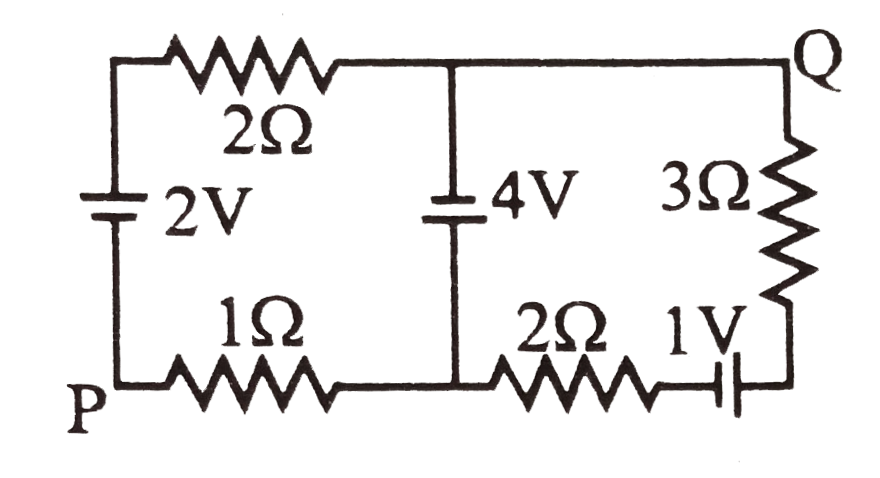The network shown in the figure is a part of complete circuit. What is the potential difference VB−VA when the current I is 5A and is decreasing at a rate of 103A/s?

A
5 V
B
10 V
C
15 V
D
20 v
Video Solution
Text Solution
The correct Answer is:C
Here, i=5A
didt=−103A/s (minus sign for decrease)
Applying Krichhoff's 2nd Law to the given circuit in Fig. we get
VA−iR+15−Ldidt0=VB
VA−5×1+15−(5×10−3)(−103)=VB
VA+15=VB
or VB−VA=15 volt

|
Topper's Solved these Questions
- ELECTROMAGNETIC INDUCTION & ALTERNATING CURRENTBook:PRADEEPChapter:ELECTROMAGNETIC INDUCTION & ALTERNATING CURRENTExercise:JEE Mains Ad..(Multiple Choice Question)
Explore 1 Video
- ELECTROMAGNETIC INDUCTION & ALTERNATING CURRENTBook:PRADEEPChapter:ELECTROMAGNETIC INDUCTION & ALTERNATING CURRENTExercise:Multiple Choice Questions
Explore 1 Video
- ELECTROMAGNETIC INDUCTION & ALTERNATING CURRENTBook:PRADEEPChapter:ELECTROMAGNETIC INDUCTION & ALTERNATING CURRENTExercise:Value Based Questions
Explore 2 Videos
- DUAL NATURE OF RADIATION AND MATTERBook:PRADEEPChapter:DUAL NATURE OF RADIATION AND MATTERExercise:Exercise
Explore 191 Videos
- ELECTROMAGNETIC WAVESBook:PRADEEPChapter:ELECTROMAGNETIC WAVESExercise:II Focus multiple choice question
Explore 5 Videos
Similar Questions
Knowledge Check
In the circuit shown, what is the potential difference VPQ?
 A+3VB+2VC−2VDnone
A+3VB+2VC−2VDnoneThe network shown in the figure is part of a complete circuit. If at a certain instant, the current I is 5A and is decreasing at a rate 103A/s then VB−VA is
 A20VB15VC10VD5V
A20VB15VC10VD5VIn the circuit shown, what is the potential different VPQ ?
 A+3VB+2VC−2VDNone of these
A+3VB+2VC−2VDNone of these
In the circuit (Fig.) what is potential difference VB−VA (in V) when current I is 5A and is decreasing at the rate of 103As−1

View SolutionIn the circuit shown , what is the potential difference VPQ?

View SolutionThe network shown in the figure is a part of a copmplete circuit. If at a certain instant, the current i is 5A and decreasing at the rate of 103As, then Vs−VA (in volt) is
'(##CEN_KSR_PHY_JEE_CO23_E01_022_Q03##)'
View SolutionPotential difference VB−VA in the network shown is

View SolutionThe network shown in the figure is part of a complete circuit instant the current (I) is 5A and is decreasing at a rate of 103 A s−1, then the value of VB−BA is

View Solution


